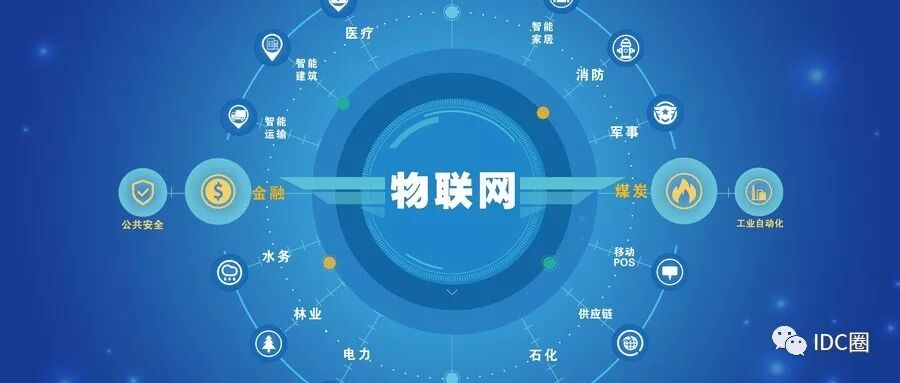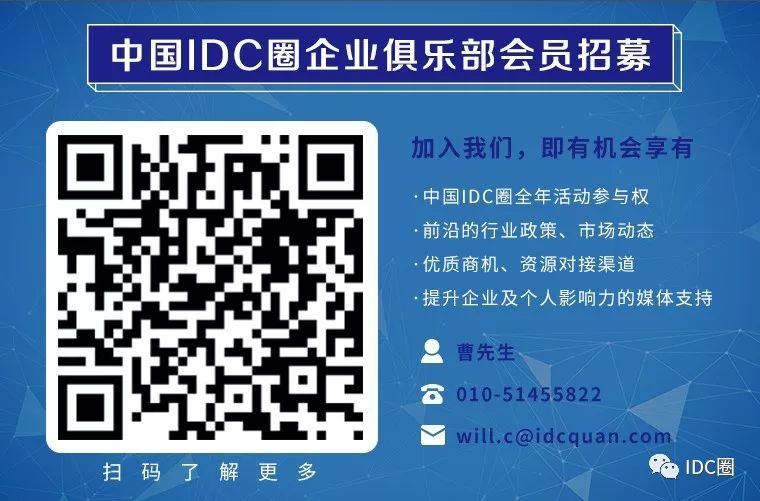

Companies are beginning to implement IoT solutions and process data through edge computing before sending data to the cloud. This article discusses the reasons behind this trend.

Edge computing has become an important trend in the IoT. Various IoT companies have discovered significant benefits in processing data through edge computing before sending it to the cloud. A recent survey by Micron/Forrester confirmed this trend: 53% believe that complex data sets should be analyzed through edge computing in the next three years. Therefore, some boldly predict that “edge computing will swallow cloud computing”.

The popularity of edge computing is due to its ability to solve key issues in the implementation of industrial IoT. By processing large amounts of sensor data, edge computing can reduce the cost of data transmission over networks and the cost of cloud data storage. Edge computing can also analyze and filter data at the sensor side, sending only relevant data to the cloud.
Many industrial IoT applications require sub-second response times to ensure safety and critical, precise operations. For example, if a human gets too close to an industrial machine, the machine needs to stop immediately. In such cases, waiting for back-and-forth communication with the IoT cloud platform to make a stop decision is not feasible. By shifting this processing to edge computing near the sensors, sub-second responses can be achieved. Another example is the sub-second response required for autonomous vehicles, which can also benefit from edge computing.
The security and privacy requirements of industrial IoT also drive the demand for edge computing. Factories and critical infrastructure can utilize edge devices to protect essential industrial processes and equipment from direct impacts of network connectivity. Similarly, the data generated by these machines is often private and confidential, and edge computing can keep sensitive information within the factory.
Finally, edge computing can also enable autonomous operations. Many industrial operations cannot simply stop due to network connectivity issues. However, regardless of network conditions, edge computing can ensure the normal operation of devices and factories.


 Control of Edge Computing
Control of Edge Computing
Edge computing has attracted the attention of technology vendors. Small startups are creating dedicated edge computing stacks. IoT platform providers have edge solutions related to IoT hardware suppliers, and even open-source foundations are recognizing the potential opportunities in edge computing.
The market dynamics between different vendors and the open-source community are still evolving. Some vendors aim to provide complete cloud solution devices, while others are forming partnerships, and some are collaborating with the open-source community. It is not yet clear which vendor is in a significant leadership position, but some appear to have a slight edge.

 IoT Cloud Providers
IoT Cloud Providers
The edge solutions of IoT cloud providers focus on providing customers with integrated solutions that include devices, edge, and cloud. Their work allows customers to more easily build, deploy, and manage IoT devices connected to their cloud platforms. For many customers looking to quickly launch new products, IoT cloud providers seem to have an advantage. However, in the long run, the risk of these integrated solutions is that they may lock customers into their vendor’s platform.
Amazon and Microsoft are leaders among IoT cloud providers. Both have edge solutions connected to their respective IoT cloud platforms. Amazon’s AWS IoT Greengrass allows connected devices to run machine learning, data synchronization, and connect with AWS IoT Core by executing AWS Lambda functions and AWS services. Similarly, Microsoft’s IoT Edge allows connected devices to run Microsoft’s Azure services. Microsoft has also created an open-source project for IoT Edge on GitHub. While it seems that IoT Edge can be ported to other hardware platforms, it is actually tightly integrated with the Azure IoT Hub cloud platform.
Google has released Cloud IoT Edge, which appears to focus on providing AI capabilities for edge computing. Cloud IoT Edge is still in alpha. In the past, Google announced a partnership with the well-regarded edge computing vendor Foghorn.


 IoT Platforms
IoT Platforms
Many IoT platform providers are also creating their own edge computing products. Companies like Litmus Automation, Clearblade, Bosch IoT Suite, and Software AG Cumulocity offer edge solutions connected to their IoT platforms. Most of these companies are working to implement data analytics and machine learning models on edge hardware.
Some of these vendors have also formed partnerships with IoT hardware suppliers. For example, Software AG has partnered with Dell and Eurotech to provide its edge software solutions on Dell and Eurotech hardware. Having integrated hardware and software solutions can help these companies more easily promote joint solutions to customers.

 Edge Vendors
Edge Vendors
Many venture-backed startups are dedicated to providing edge solutions. Companies like Foghorn and Swim focus on providing machine learning and analytics based on edge computing. Other companies like Zededa and Edgeworx are working to bring virtualization and container technologies to edge devices.
All these companies have established partnerships with mainstream IoT platforms and IoT cloud providers, connecting their edge solutions to various IoT platforms. The challenge they face will be supporting diverse integrations, which often rely on the APIs and protocols of their respective vendors.


 IoT Hardware Vendors
IoT Hardware Vendors
IoT gateway vendors are investing in developing software stacks that run on their hardware. To meet the demands of edge computing, these software stacks are becoming increasingly complex. Interestingly, many hardware vendors are leveraging open-source projects to build their software solutions.
Dell and Rigado have IoT gateways running Ubuntu Core, which can be remotely managed and deployed with software running on these gateway devices. Dell is also a leader in the edge computing EdgeX open-source project. Eurotech offers the Everywhere Software Framework based on Eclipse Kura, which is an application for building edge computing. The Vortex Edge and Vortex DDS developed by Taiwanese gateway manufacturer Advantech make it easier to deploy software on their gateways. Vortex DDS is based on the Eclipse Cyclone DDS project.

 Open Source Community
Open Source Community
The open-source foundations are also actively engaging in edge computing initiatives. Since open-source foundations do not rely on any vendor, companies and individuals can collaborate to create edge computing technologies. For those concerned about being locked into a single vendor (especially those relying on AWS and Microsoft), the emerging open-source community for edge computing offers an alternative.
Most IoT cloud providers, IoT platform providers, and edge startups are not participating in building collaborative open-source communities for edge technologies. Some companies have established their own open-source projects, but many still focus on providing commercial solutions for a specific vendor. These commercial solutions are often built using open-source technologies, but these companies have not actively participated in open-source technologies. However, despite the lack of participation from these vendors, the momentum of open-source projects in edge computing has not stalled.

Recently, the Linux Foundation announced the LF Edge community, which includes five different open-source projects, among them EdgeX and Zededa’s virtualization project Project EVE. Over 60 companies, including Arm, AT&T, Dell, Ericsson, IBM, Intel, Huawei, Red Hat, and Samsung, have agreed to collaborate to establish a public framework for edge computing.
LF Edge is the largest enterprise-sponsored open-source collaboration community to date. These corporate sponsors seem to be companies without strong IoT platform products, so they hope to compete fairly through a public framework. Integrating five major projects and establishing a new edge computing project is a highly anticipated task. Once successful, it will certainly challenge companies that only offer a single IoT approach.
The Eclipse Foundation is one of the most mature open-source communities in IoT. The Eclipse IoT was created six years ago and has over 30 open-source projects, including many edge computing projects. Eclipse Kura is the premier Eclipse edge computing project, while Eclipse ioFog and Eclipse fog05 have also innovated in edge technology. Eclipse also bears the responsibility of realizing industry standards for edge computing, such as MQTT, OPC-UA, DDS, CoAP, and LWM2M.
The OpenStack Foundation is also making strides into the edge computing space. The StarlingX project, based on Wind River code, integrates various open-source projects, including CentOS, OvS-DPDK, Ceph, Kubernetes, and OpenStack, with the goal of running cloud services on edge devices. This project was launched in October 2018, making it relatively new.
Huawei and Baidu have also created their own edge computing projects on GitHub. Huawei is a major contributor to KubeEdge (which extends Kubernetes to edge computing). This project was launched on GitHub in September 2018. In January, Baidu announced the openEdge project. openEdge integrates Baidu’s IoT cloud platform, so its independence is currently unclear.
Summary of Content
Edge computing is a crucial component of IoT solutions. Customers can benefit from the innovation and diversity of edge computing solutions.While complete edge computing provided by a single vendor’s cloud infrastructure is very easy to use, integrated solutions are costly and may lock customers into the vendor’s platform for the long term. Over time, customers typically need heterogeneous computing solutions for distributed technologies, such as edge computing. If history repeats itself, this time the industry will address the issue by defining common standards and protocols for communication between edge computing and the cloud. Like web technologies, these standards and protocols may be implemented by open-source and standards communities that do not rely on any vendor. (Source: CSDN Cloud Computing)
The IDC report is here

Disclaimer: For reprints, please prominently indicate the source of the article (Source: China IDC Circle).
· For original articles with identification, please email [email protected] or leave a message below the article to apply for whitelist authorization.
Unauthorized reprints and adaptations will be pursued according to the relevant rules of the WeChat public account.
